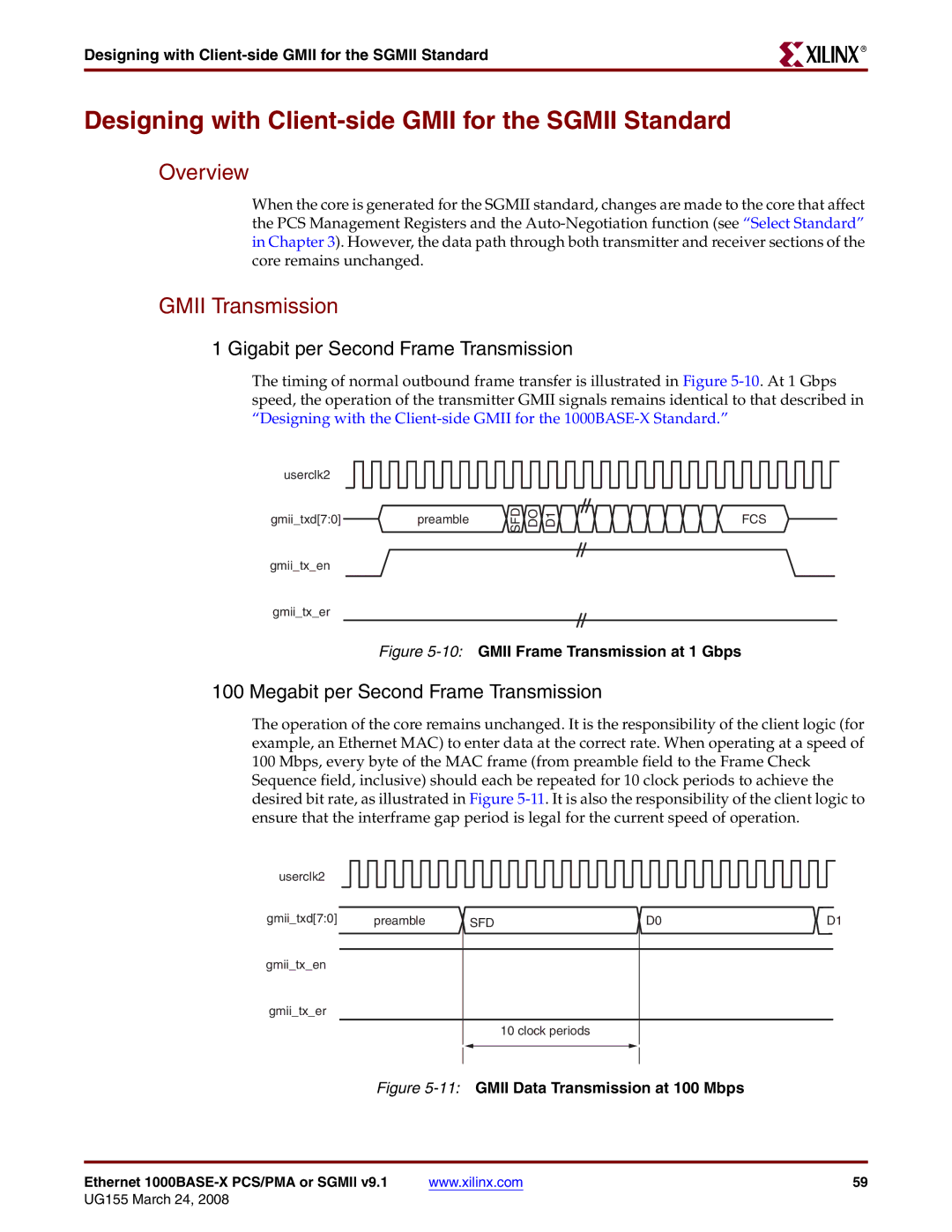
Designing with Client-side GMII for the SGMII Standard
R
Designing with Client-side GMII for the SGMII Standard
Overview
When the core is generated for the SGMII standard, changes are made to the core that affect the PCS Management Registers and the
GMII Transmission
1 Gigabit per Second Frame Transmission
The timing of normal outbound frame transfer is illustrated in Figure
userclk2
gmii_txd[7:0]preamble
gmii_tx_en
gmii_tx_er
SFD DO D1
FCS
Figure 5-10: GMII Frame Transmission at 1 Gbps
100 Megabit per Second Frame Transmission
The operation of the core remains unchanged. It is the responsibility of the client logic (for example, an Ethernet MAC) to enter data at the correct rate. When operating at a speed of 100 Mbps, every byte of the MAC frame (from preamble field to the Frame Check Sequence field, inclusive) should each be repeated for 10 clock periods to achieve the desired bit rate, as illustrated in Figure
userclk2
gmii_txd[7:0]
gmii_tx_en
gmii_tx_er
preamble | SFD | D0 | D1 |
|
| 10 clock periods |
|
Figure |
| ||
Ethernet | www.xilinx.com | 59 |
